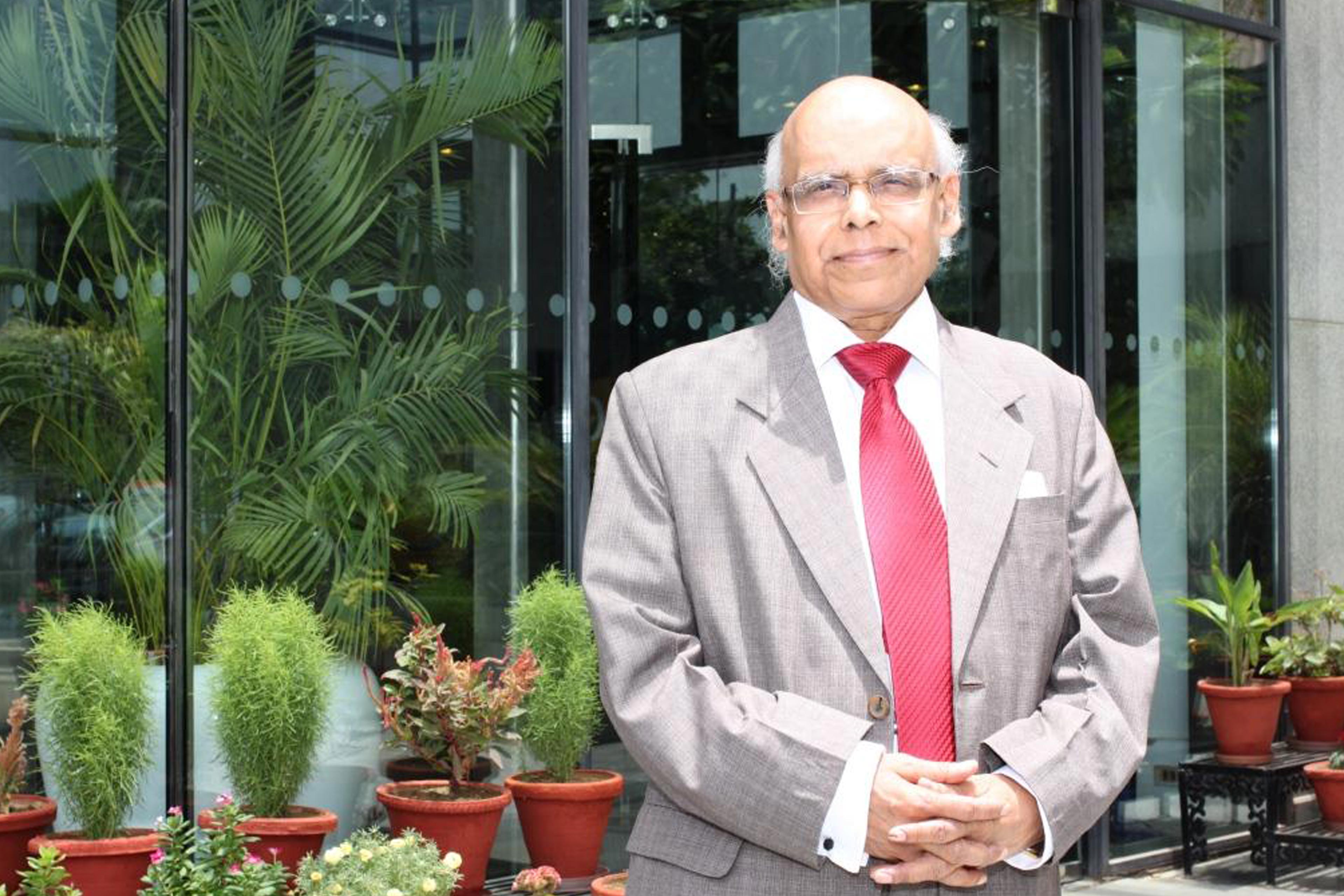EY refers to the global organization, and may refer to one or more, of the member firms of Ernst & Young Global Limited, each of which is a separate legal entity. Ernst & Young Global Limited, a UK company limited by guarantee, does not provide services to clients.

Prioritizing health and education expenditure is crucial to harness India's demographic dividend and sustain growth.
In brief
- In India’s journey towards a Viksit Bharat, government spending on education and health needs to rise to 6.5% and 4% of GDP by FY2048.
- Increasing the revenue-to-GDP ratio from 21% to 29% can fund these critical expenditures while ensuring fiscal sustainability.
- Equalization transfers are essential to support low-income states in boosting their education and healthcare spending.
As India strives towards a Viksit Bharat (developed India), sustaining growth near its potential will depend on productively employing its large working-age population. This critically depends on higher investment in human capital, requiring significant augmentation of education and health expenditures, particularly by the government.
This prioritization in government expenditure covers the fourth dimension of India’s fiscal framework following the first three, namely:
- Achieving the right size of government,
- Recasting fiscal responsibility framework, and
- Realigning transfers from the GoI to states
These were discussed in the November 2024 to January 2025 issues of the EY Economy Watch1. This will ensure that India’s unfolding demographic dividend is leveraged well while maintaining macroeconomic stability and sustainability of fiscal deficit.
In this article, we provide our estimates of the needed allocation for general government health and education spending in India. We also consider how the implied increase in these two sectors can be effectively financed.
Why India needs to increase education expenditures relative to GDP
Table 1 shows that India’s government education expenditure was 4.64% of GDP in 2021 (FY22 for India), the latest year for which cross-country data is available from World Bank. This needs to be raised to 4.8% to reach the average level of high-income countries. Some peer countries allocate an even higher share, with government education spending ranging from 5.05% of GDP in the Euro area to 6.55% in South Africa.
The required level of per capita government expenditure on education, with reference to a Viksit status, can be considered in relation to the relevant per capita GDP. For this purpose, we consider a cross-country framework in which per capita GDP (log terms) and per capita general government expenditure (PCGE) on education (current US$ terms) are plotted together (Chart 1). At a per capita GDP of US$1,994, India’s PCGE on education appears to be on the trendline. Here, the per capita GDP and PCGE levels are considered as the averages over 2017-19.
However, the level of PCGE on education, consistent with a developed country status defined as having a per capita GDP level of US$14,0052 or higher, is estimated at US$600. This calls for increasing India’s PCGE on education by more than seven times from US$83.2 to US$600.
In the context of education, we require to also factor in the share of the young population that needs to be educated and trained. For this purpose, we consider the share of population up to the age of 20 years. The higher the share of this young population, the higher is the requirement of expenditure on education. As per our estimates, by FY2048, that is, by the time India reaches a developed country status, the general government spending on education may require to be increased to 6.5% of GDP3 from the current level of 4.6%.
Why India needs to increase government health spending relative to GDP
Table 1 (Col 4) shows that in 2021 (FY22 for India), India’s government health spending was 1.1% of GDP. This is 1.7% points lower than the corresponding average for middle-income countries and about 3.5% points below that of the average of BRICS countries (excluding India).
Chart 2 shows that given India’s per capita GDP level at US$1,994 (average over 2017-19), the trendline indicates India’s current PCGE on health at US$20 (average over 2017-19) is below the representative level of US$34.6. The corresponding levels relative to GDP are 1% and 1.7% respectively. As India reaches a developed economy status, its per capita government health spending may have to be increased to close to US$534, equivalent to about 3.8% of GDP. Thus, the actual government health spending may need to be initially uplifted from 1% of GDP to its current representative level of 1.7%, and further to 3.8% by the time India reaches the developed country status.
How equalization transfers can help cope with state-specific fiscal capacity differentials
While the overall government expenditure on education and health needs to be increased, there is also an inter-state dimension to the allocation of this incremental expenditure.
In fact, many of the lower per capita income states with a relatively higher share of the young population may need to increase their per capita expenditures on education to a much larger extent than some of the more developed states. This re-distributive dimension should be attempted through an exercise of equalization transfers for health and education4. As shown by Chart 3, the states of Bihar, Uttar Pradesh, Jharkhand and Madhya Pradesh require special attention while simultaneously increasing the average per capita expenditure on education with respect to all states.
Similar to the case of education, some of the low-income states are able to spend much less on health due to their fiscal capacity constraints as measured by per capita nominal GSDP. Chart 4 shows two sets of states that require particular attention. In the southeast quadrant are the states where per capita government expenditure on health is relatively low, but they also have a younger population. In the Southwest quadrant are states where per capita government expenditure on health is relatively low while their populations are relatively older. In both cases, health expenditure needs to be prioritized. The first group of states includes Bihar, Uttar Pradesh, Jharkhand and Madhya Pradesh. These are lower fiscal capacity states. The second group of states comprises Gujarat, Punjab, West Bengal and Telangana who need attention because of their relatively ageing populations.
How India can finance additional health and education expenditures
Bringing together the required increase in the allocation for health and education, compared to the present levels, we consider that 2.5% points and 3% points increase in government education and health spending relative to GDP respectively, would be called for from now until FY2048. Education may be prioritized above health as India’s young dependency ratio is expected to remain higher than the old dependency ratio until 2056. Further, effective utilization of the allocated amounts for these priority services is critical for reaping the unfolding demographic dividend.
The suggested expenditure augmentation can be accommodated by an increase in the revenue receipts to GDP ratio that was discussed in Part 1 of this series of writeups on fiscal framework for Viksit Bharat5. There, we argued that the revenue receipts to GDP ratio should be increased from the present level of nearly 21% to 29%, out of which nearly 2.5% points may have to be allocated for reduction in fiscal deficit, leaving a balance of close to 6% points of GDP. Of this, 5.5% points may have to be allocated to education and health. In both cases, the effort of low fiscal capacity states needs to be supported by suitable schemes of equalization transfers.
Download the full pdf
Summary
By leveraging its demographic dividend and steadily increasing the share of government health, education and infrastructure spending, India can foster higher growth, employment, and productivity, creating a virtuous cycle of development. A well-planned fiscal strategy will be key to sustaining macroeconomic stability while unlocking long-term economic potential.
How EY can help
-
Tax policy advisory services by EY India offers insights & strategies to navigate complex tax regulations, driving business growth and compliance.
Read more -
Discover how EY-Parthenon education strategy consulting teams can help education leaders identify future challenges and implement changes to meet them.
Read more -
EY-Parthenon Health and Wellness Strategy Consulting teams help life sciences firms boost growth, resilience & agility through digital & value strategies.
Read more
Related articles
FY26 Union Budget: Diversifies stimuli and rethinks fiscal consolidation
FY26 Union Budget shifts focus to consumption with INR1 lakh crore tax relief for households, INR1.5 lakh crore in interest-free loans, and INR4.3 lakh crore in grants.
Why Budget 2025 should focus on restoring India’s capex growth momentum
India's FY25 GDP growth forecast at 6.4%, with fiscal deficit to improve to 4.4% in FY26 and a 20% capital expenditure hike. Learn more.
Recasting fiscal responsibility framework: Roadmap to achieve Viksit Bharat
Discover India's new fiscal framework for Viksit Bharat: aiming for 30% debt, 3% deficit norms, and zero revenue deficit to ensure economic stability.






